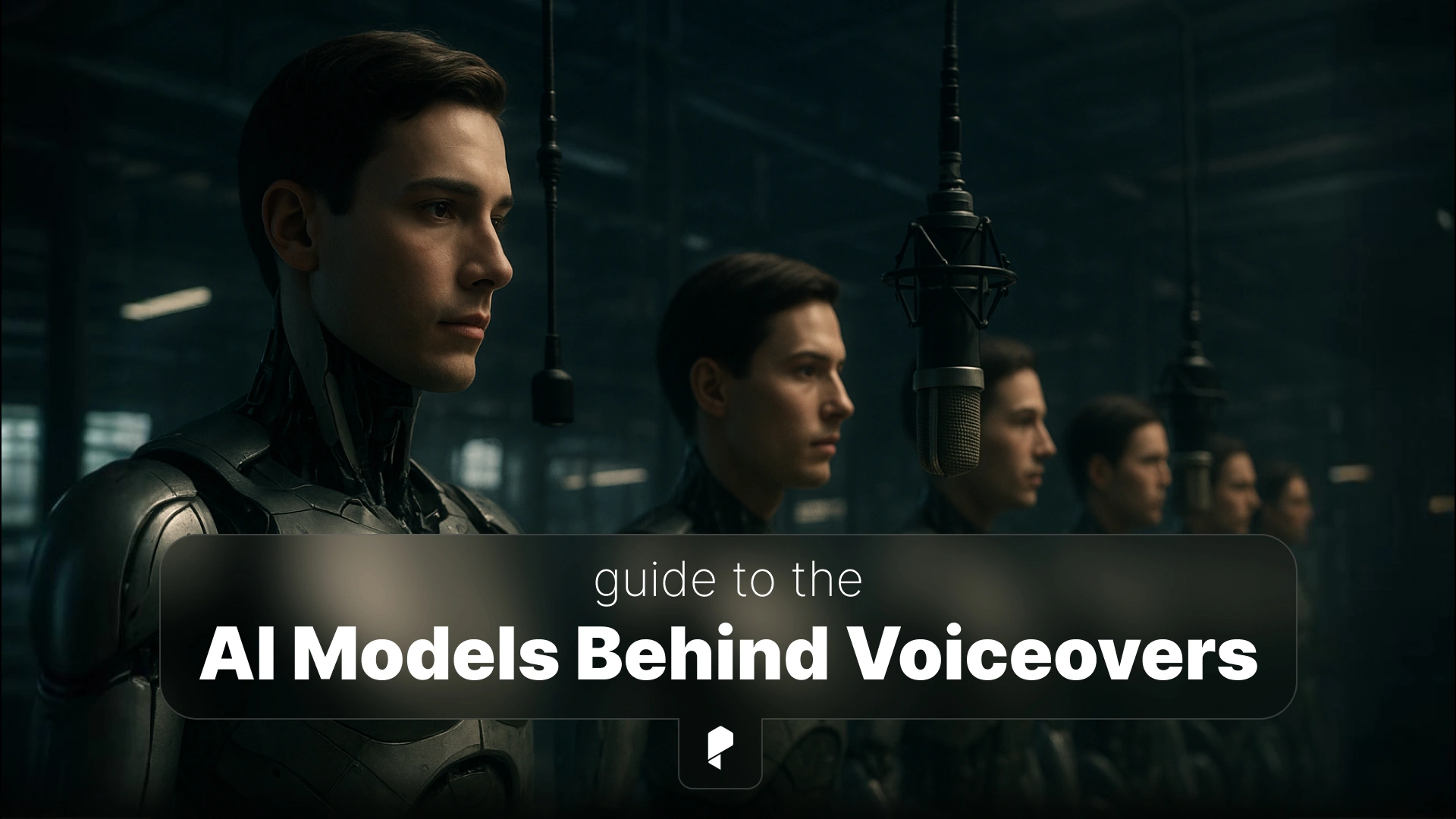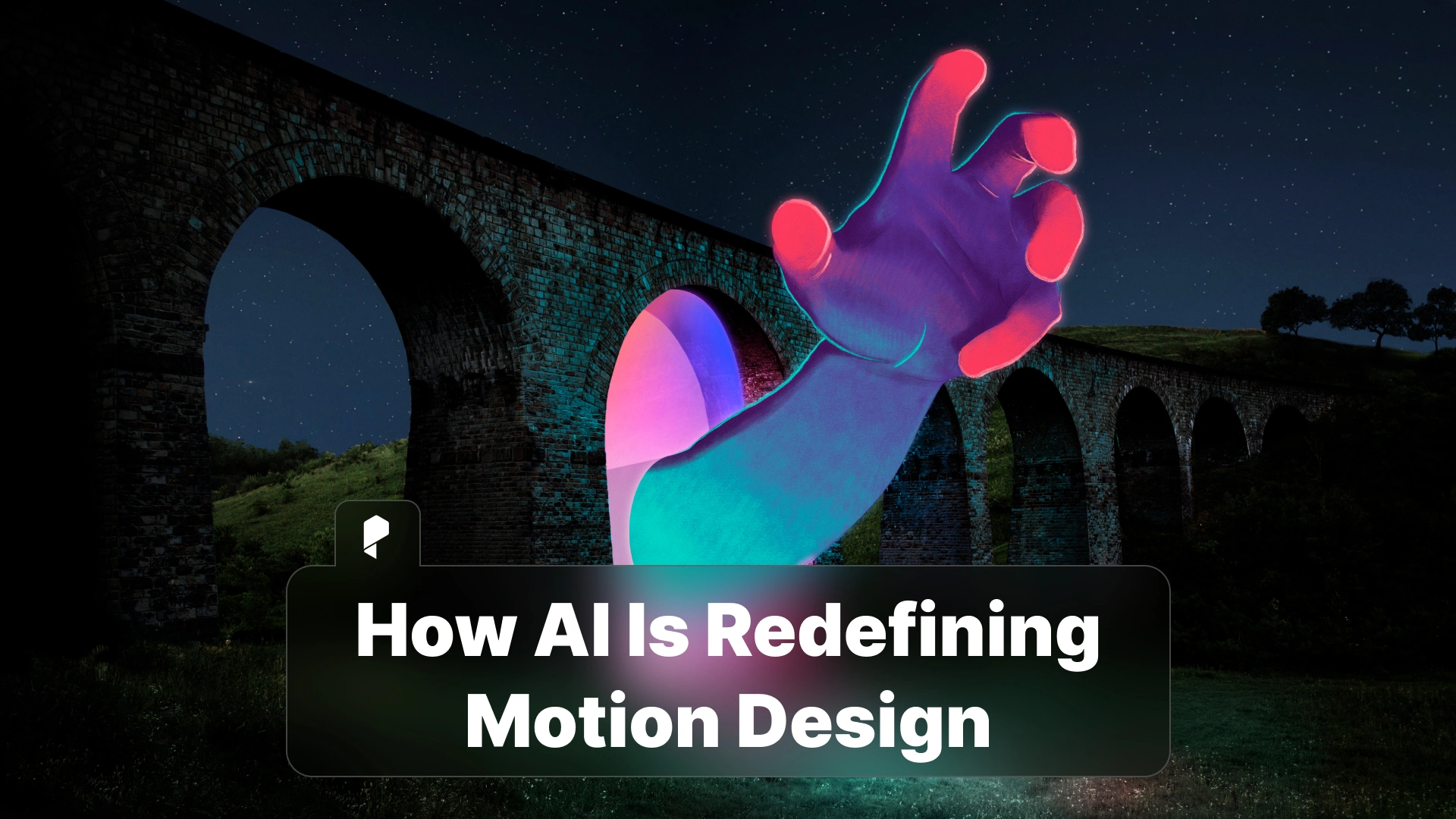The AI Models Behind Voiceovers: How TTS and Neural Synthesis Bring Voices to Life

Most people know what AI voiceovers do, but not how they work. The truth is, creating natural-sounding speech is one of the hardest challenges in artificial intelligence. It’s not just about converting text into sound; it’s about understanding language, emotion, pacing, and realism.
In this guide, we’ll break down the technology behind AI voices and explain how text-to-speech (TTS) and neural synthesis make it all possible. By the end, you’ll know how modern AI models behind voiceovers turn plain text into expressive, human-like performances.
If you want to experience it firsthand, check out Pixflow’s AI Voiceover, a tool where cutting-edge voice synthesis meets creativity.
The Evolution of AI Voice Technology
A few key breakthroughs transformed how speech was generated. Models like WaveNet (developed by DeepMind) introduced a revolutionary way of generating raw audio waveforms with deep neural networks, resulting in smoother and more natural sounds. Then came Tacotron and Tacotron 2, which improved pronunciation, rhythm, and intonation by converting text into high-quality mel-spectrograms before generating audio.
The latest generation, including VITS and FastSpeech, has taken things even further. These models combine speed with realism, enabling instant generation of high-quality voices with nuanced emotion and tone.
This shift from rule-based to neural voice synthesis represents a complete reimagining of how machines speak. Instead of following programmed pronunciation rules, neural models learn how humans speak, analyzing vast datasets of recorded voices and mimicking natural speech patterns.
To understand this transformation, you can explore this topic AI Voiceovers: The Complete Guide.
Understanding Text-to-Speech (TTS)
While effective, this method had clear limitations. The resulting speech often sounded monotone, lacking rhythm, flow, and emotion. It could read the words correctly but not feel them.
The evolution of machine learning–based TTS systems changed that. Instead of relying on handcrafted rules, modern models learn directly from thousands of hours of recorded speech. They identify how humans naturally vary tone, pitch, and timing, and use that data to generate speech that sounds far more organic.
This foundation paved the way for neural synthesis, the next leap in AI voice technology, which makes AI voices sound not just correct but alive.
What is Neural Voice Synthesis?
Some of the most popular models include:
Tacotron 2: Converts text into mel-spectrograms, capturing rhythm and stress patterns.
FastSpeech: Focuses on speed and efficiency while maintaining natural tone.
VITS: Combines acoustic and vocoder models for end-to-end synthesis.
Glow-TTS: Uses probabilistic modeling to create smoother and more flexible voice outputs.
These systems understand not just what to say but how to say it. They can mimic emotional cues like excitement, sadness, or calmness, making them ideal for video narration, podcasts, ads, or film voiceovers.
To see these principles in action, you can try Pixflow’s AI Voiceover, which uses neural synthesis to deliver natural, expressive voices for creators and businesses alike.
The AI Pipeline Behind Voice Generation
- Text analysis: The system first processes the input text, identifying sentence structure, punctuation, and emphasis cues.
- Linguistic preprocessing: It then converts words into phonemes, marks stress patterns, and determines pacing, ensuring smooth speech flow.
- Acoustic modeling: A deep learning model like Tacotron or VITS predicts how these phonemes should sound, creating a spectrogram that represents tone and timing.
- Vocoding: The spectrogram is converted into actual sound waves using models such as WaveGlow or HiFi-GAN, resulting in clear, lifelike audio.
- Output refinement: The final layer adds polish, adjusting tone, pacing, and quality for realism and emotion.
This entire process happens in seconds thanks to powerful AI voice generation algorithms. Platforms like Pixflow’s AI Voiceover plugin or ElevenLabs make this complex technology accessible to everyday creators, letting them generate professional-quality voiceovers directly inside their creative workflows.
If you’re curious how to implement such technology in your own work, check out How to Create an AI Voiceover (Step by Step) for a practical walkthrough.
Training Data and Model Quality
A strong dataset includes multiple speakers, languages, accents, and emotional tones. This variety teaches the model to adapt to different speaking styles and contexts. Conversely, poor-quality or limited data can cause pronunciation errors, unnatural pacing, or robotic-sounding tones.
Another critical factor is noise control. Clean, well-labeled recordings help AI recognize the subtleties of speech, such as breaths, pauses, and intonation, without confusion from background sounds.
Ethically sourced data is equally important. As voice cloning and AI synthesis grow, AI voiceover platforms focus on using licensed, consent-based datasets. This ensures that the voices generated are not only high-quality but also respectful of the original voice talent.
Multilingual and emotionally annotated datasets are now at the heart of modern speech synthesis models, enabling tools that can express joy, sadness, confidence, or calmness naturally across different languages.
Emotional and Contextual Learning
For example, when narrating a documentary, the AI uses a slower, more serious tone. For a commercial, it adds brightness and enthusiasm. This adaptability comes from context-aware neural models that analyze not only the text but also metadata about the content’s purpose and target audience.
Modern architectures like VITS and FastSpeech 2 include modules for emotion embedding, enabling them to generate voices that reflect the desired mood. This emotional control helps creators shape how a message feels to the listener.
Pixflow’s AI Voice plugin applies similar techniques, allowing users to fine-tune emotional intensity and pacing with simple controls. This makes it possible to create performances that sound convincingly human, whether you’re telling a story, producing a tutorial, or crafting a cinematic voiceover.
To dive deeper into how emotions can be refined in AI voices, see Customizing AI Voices (Emotion and Pacing).
The Future of AI Voice Models
Real-time voice synthesis will make virtual assistants, interactive media, and gaming experiences more immersive. Imagine an AI narrator that reacts to gameplay in real-time or adjusts its tone when describing emotional scenes in a film.
Another major trend is ethical voice cloning, replicating a person’s voice with consent and transparency. These systems are becoming more precise, capturing not just the voice but the subtle breathing patterns and timing that make it uniquely human.
Multimodal models are also emerging, combining voice with facial expressions, gestures, and even body language cues. These advanced systems aim to make AI communication truly lifelike.
As innovation continues, tools like Pixflow’s AI Voiceover are already bridging the gap between technology and creativity, offering content creators access to professional, human-like voices in seconds.
For a broader look at what’s coming, read The Future of AI Voice Technology to explore how these advancements will redefine the boundaries of storytelling and digital communication.
Conclusion
Whether you’re a filmmaker, educator, or content creator, understanding how these models work helps you unlock their full creative potential. AI voiceovers are no longer just a tool, they’re becoming a new art form.
Ready to experience it yourself? Try Pixflow’s AI Voiceover and start crafting realistic, expressive voices powered by exclusive neural models. Bring your stories to life and shape the future of sound with AI.
If you buy something through our links, we may earn an affiliate commission or have a sponsored relationship with the brand, at no cost to you. We recommend only products we genuinely like. Thank you so much.





